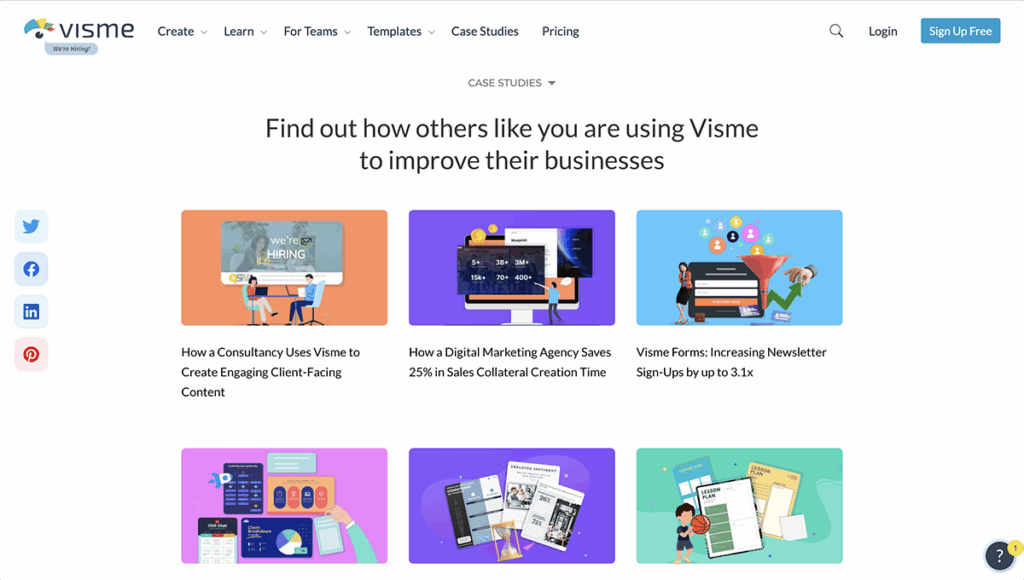Ever tried to tell your friends about your favorite game or the coolest toy you have? Well, imagine doing that for your own business! That’s where a pitch deck comes in—it’s like a special book that helps you share your business story with others, especially if you want them to support you or invest in your big ideas.
In this article, we’ll talk about how to create a pitch deck that’s not boring but exciting, just like your favorite storybook. So buckle up, and let’s learn how to make your business story a real page-turner!
Table of Contents
What is a Pitch Desk?
A pitch deck is like a cool slideshow that businesses use to tell others about themselves. It’s especially important when they’re trying to get investors or partners interested. Imagine it’s like a storybook for grownups but about a business. Instead of lots of words, there are pictures and a few key points on each page to show what the business is all about.
In this special presentation, the business explains the main problem it’s solving, what cool solution it has, and why it’s such a big deal in the market. There’s also info about how the business plans to make money, how it’s doing so far, and who the awesome team behind it is.
The goal is to get people excited and interested in supporting the business, like giving money or teaming up for success. So, a pitch deck is like a business’s superhero comic strip, aiming to convince others that it’s worth supporting and joining the adventure.
Understand Your Audience
Understanding your audience means knowing who you are talking to and what they care about. Imagine you have a favorite game, and you want to tell your friends how great it is. You wouldn’t talk about the cool graphics to someone who loves puzzles, right? So, in the same way, when you’re making a pitch deck, you want to think about who is listening.
If you’re talking to investors, they want to know how your business can make money and grow. They like numbers and facts. On the other hand, if you’re explaining your idea to customers, they want to know how your product can make their lives better.
So, you need to show them how it solves a problem they have. It’s like knowing the special ingredients that make your friends excited about playing a game with you—you tailor your pitch to what they like.
Every audience is different, so it’s important to adapt your pitch to what they find interesting. For example, if you’re talking to a group of tech-savvy people, you might focus more on the cool technology your product uses.
But if you’re speaking to everyday folks, you’d explain how simple and helpful your product is in their daily lives. Understanding your audience is like speaking their language and showing them why your business is something they should be excited about.
Key Components of a Pitch Deck
There are several key components of a pitch deck that ensure that it serves it’s purpose. Here are the essentials:
Cover Slide
The cover slide is like the front page of a storybook about your business. It should have your business name, a cool logo, and maybe a short tagline that tells everyone what your business is all about. Imagine it’s the first impression of your book, so make it catchy and interesting!
Problem Statement
In this part, you talk about the main problem your business is trying to solve. Think of it like telling a friend about a problem you found a solution to. Explain why this problem is a big deal and how lots of people have it. Make it clear and simple, so everyone can understand why your business is needed.

Solution
Now, it’s time to introduce your superhero—your business solution! Tell everyone how your product or service is the answer to the problem you just talked about. Use pictures and simple words to show how awesome your solution is. This is the part where you make everyone excited about what you’re offering.
Market Opportunity
Okay, so now you’ve explained the problem and your cool solution. But who cares? Well, this part is about showing how big the group of people facing this problem is—it’s like showing how many players are in the game. Use some facts and numbers to tell everyone about the market size and why it’s a great opportunity for your business. Make them see that there are lots of people who could benefit from what you’re offering.
Business Model
Now, let’s talk money! How is your business going to make the cash? Explain your plan—it could be selling products, subscriptions, or maybe getting fees from services. Break it down so that it’s easy for everyone to understand. This part is like explaining the rules of the game—how you score points and make a profit.
Traction
Imagine you’re telling the story of your business journey so far. This part is about highlighting the exciting parts of the story—like the achievements, milestones, and how people are loving what you’re doing. Maybe you got lots of customers, or your sales are going up. Share these moments to show that your business is on the right track.
Competitive Landscape
In the world of business, there are other players on the field. Here, you talk about who your competition is – the other businesses trying to solve the same problem. But, of course, your business is the superhero! Explain what makes you stand out—your special powers or features that others don’t have. It’s like showing why your game is the best to play.
Marketing and Sales
Now that you’ve got a great product, how are you going to tell everyone about it? This part is about your game plan for getting the word out. Are you using social media, partnerships, or maybe good old-fashioned advertising? Lay out your strategy and tell everyone how you’re going to make your business known to the world.
Financial Projections
Numbers time! In this part, you predict the future of your business—how much money you think you’ll make, your expenses, and if there’s going to be a lot of profit. It’s like making guesses about the next chapters in your business story. Investors want to see that your business not only solves a problem but can also make money in the long run.

Team
Introduce your squad! This part is about the awesome people working with you. Think of it as introducing characters in your story—who’s the brainy one, the creative one, and the one who gets things done. Highlight their skills and experiences to show that your team is the dream team for making your business successful.
Investment Opportunity
It’s time to ask for what you need—whether it’s money, support, or partnerships. Be clear about what you’re asking for and why you need it. It’s like telling your friends what items you need to level up in your game. Make it easy for them to join your journey and support your business adventure.
Visual Elements
Alright, picture time! This part is about making your pitch deck look really cool and easy to understand. Just like how you pick a fun and exciting cover for your favorite storybook, your pitch deck needs to be visually appealing. Use colors, pictures, and simple fonts to make it look nice. Think of it as creating a comic book where each slide tells a part of your business story. Make sure the visuals match what you’re saying, like showing a picture of your awesome product when you talk about it.
Now, why is this so important? Well, people remember things better when they see pictures, and good design keeps them interested. Imagine telling a story with no pictures—it might get a bit boring. So, add some spice to your pitch deck with visuals! Keep it clean and not too crowded, so everyone can easily follow along. It’s like drawing a treasure map for your audience—make it exciting, and they’ll want to go on the adventure with you.
Common Pitfalls
Here’s a list of common mistakes to avoid when creating a pitch deck:
- Overloading with Information
Avoid cramming too much information into each slide. Keep it simple, focusing on key points to maintain clarity.
- Neglecting Design
Don’t underestimate the power of visual appeal. A poorly designed pitch deck may distract from your message. Ensure a clean and professional layout.

- Ignoring Your Audience
Tailor your pitch to your audience. Avoid using technical jargon if your audience is not familiar with it, and highlight aspects that matter to them.
- Lack of Storytelling
Don’t present a list of facts. Craft a compelling narrative that takes your audience on a journey, making your business story memorable.
- Unclear Value Proposition
Ensure that it’s crystal clear what your business does and why it matters. If your audience can’t understand your value proposition, they’re less likely to invest.
- Skipping the Problem
Clearly articulate the problem your business is solving. Without a clear problem statement, your solution may not seem as valuable.
Pitch Perfect
In the end, making a great pitch deck is like telling a fantastic story about your business adventure. Remember to keep it simple, show cool pictures, and speak the language your audience understands. Avoid common mistakes like too much information, messy designs, or forgetting to explain why your business is so awesome.
Just like a good storybook, your pitch deck should leave people excited and wanting to be part of your business journey. So, take your time, tell your story well, and watch as your pitch deck becomes the superhero that helps your business shine!
Have you created pitch decks before? How was your experience? Let us help you get started! At EvolveDash, we’re passionate about helping businesses grow and evolve in the digital world. Our team is here to help every step of the way, from developing custom mobile apps to creating personalized websites.
With a proven track record of helping over 100 satisfied customers and 450 completed projects, we’re confident we can help you achieve your goals too. Let’s turn your business vision into success!
FAQs
- How long should a pitch deck be?
A pitch deck should be between 10-15 slides, covering the key aspects of your business without overwhelming your audience.
- Can I use a pitch deck for customers or just investors?
Yes, pitch decks can be adapted for both investors and customers. For customers, focus more on how your product solves their problems.
- What should I do if I don’t have strong financial projections yet?
If you don’t have financial projections, explain how you plan to reach financial milestones and highlight any early traction you’ve gained.
- How do I make my pitch deck stand out?
Use clear, simple visuals, focus on storytelling, and make sure your value proposition is crystal clear. A good design also helps capture attention.
- Is it necessary to have a team slide in the pitch deck?
Yes, showcasing your team’s expertise and skills adds credibility and shows investors that you have the right people to execute your business plan.



















